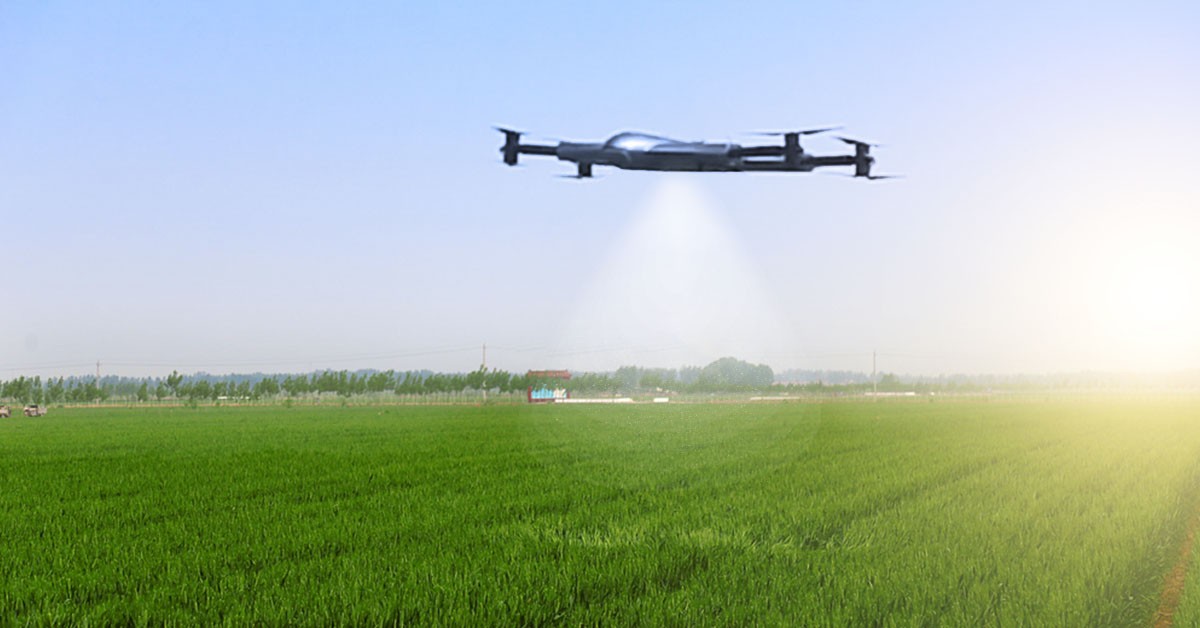Topographic Survey: Types, Process, and Benefits

A topographical survey is a relatively complete map of the natural and man-made characteristics of a given piece of land. Landscape features include elevation, trees, buildings, fences, slopes, and drainage patterns. Engineers and developers use it to understand the land before commencing any work related to construction or design.
Unlike boundary surveys, a topographic survey primarily deals with surface and elevation detail rather than property lines. Thus, it is necessary to prepare accurate site plans, building layouts, and infrastructure designs. Surveyors collect elevation and location data from total stations, GPS, and drones. The survey occurs mainly at the beginning of any land planning or development project.
Topographic surveying identifies potential problems before they become expensive surprises during construction. It also helps with planning for improved placements of drainage, roads, or buildings. Government agencies will require most topographic surveys for their permitting and compliance process.
Types of Topographic Surveys
Topographic surveys differ according to their various needs in assessing, designing, and planning land development. Information from these surveys helps provide adequate detail for project precision, regulation, and application of natural and transformed spaces. The proper method provides accurate measurement while permitting better decision-making from planning to construction.
Here are the different types of topographic surveys:
1. Boundary Survey: Definition, Purpose, and Use
A boundary survey determines the exact legal property lines between parcels using deed descriptions, markers, and physical site inspections. A boundary is necessary before purchasing or selling property, erecting fences, and resolving conflicts between nearby neighbors over property lines. They use the latest surveying tools such as GPS, robotic total stations, and measuring tapes to locate and mark legal property corners.
2. Hydrographic Survey: Definition, Purpose, and Use
A hydrographic survey measures and maps all features underwater, such as river beds, coastlines, and seafloors, to support marine navigation and engineering. Ports, bridges, offshore platforms, pipelines, and dredging are necessary to collect accurate underwater topography data and requirements. Surveyors utilize GPS, echo sounders, and sonar devices to locate submerged hazards, depths, and contours along coastlines and bodies of water.
Hydrographic survey data work well in coastal development, flood management, safe ship passage, and environmental placement planning. It supports the design of marine infrastructures and prevents damage from shallow areas or unknown underwater obstructions. Indeed, hydrographic surveys complement boundary surveys, requiring legal verification on marine limits for construction adjacent to coastal properties or ports.
3. ALTA Survey: Definition, Purpose, and Use
The ALTA Survey establishes property boundaries, easements, zoning, and improvements for commercial property transactions according to detailed national standards. It combines multiple information to comply with title insurance and lender due diligence requirements, such as:
- Boundary surveys
- Topographic information
- Legal research
Title companies, attorneys, and banks require this survey before they will underwrite or insure any development or purchase of property.
ALTA must conform to the standards established by the American Land Title Association and the National Society of Professional Surveyors. It accounts for fences, walls, access points, easements, and encroachments while establishing ownership and any rights affecting its use. Surveyors use reliable surveying tools and research on public records to verify that the data is accurate and legally defensible.
Topographic surveys are an earlier step in identifying risks, securing finance, and ensuring legal land transfer in high-value property deals. ALTA is crucial in identifying risks, obtaining financing, and supporting lawful land transfers in high-value property deals.
Learn how the drone ALTA survey process can streamline your land surveying work.
4. As-Built Survey: Definition, Purpose, and Use
The As-Built Survey records the final location of structures and utilities after construction is complete for accurate documentation and compliance. It also verifies whether a project was built according to approved plans and engineering specifications from start to finish.
Unlike pre-construction topographic surveys, as-built surveys represent the final result rather than assessing natural or planned site conditions. They guide construction firms in identifying differences between what is proposed on paper and the results of actual construction work, thereby improving future designs.
5. Site Survey: Definition, Purpose, and Use
Site surveys are necessary before commencing any design or construction work. They gather essential information about the land to ensure project viability and safety from the start. These surveys facilitate the understanding of the following:
- Site conditions
- Slopes
- Vegetation
- Utilities
- Access points
It also includes the possible hazards that contextually affect construction planning and layout.
These data are crucial to engineers and architects for building drainage and foundation types, parking areas, and pathways. Depending on the project, site topographic surveys include anything from topographic surveys, boundary data, utility location, and environmental assessments. Site surveys are typically the first step in planning a site for commercial, residential, or public infrastructure projects.
6. Geodetic Survey: Definition, Purpose, and Use

Geodetic surveys measure large areas of land employing Earth’s curvature and precise global coordinates for national mapping and scientific research. Satellite systems such as GPS, laser scanning, and astronomical observations establish reference points across a country or continent. Surveys maintain consistency with other land surveying services for property, topographic, and infrastructure mapping purposes.
Surveying networks for aviation, telecommunications, infrastructure, and environmental monitoring use geodetic control points. In contrast to conventional topographic surveys, geodetic surveys are conducted on a much larger scale and emphasize precision on a global scale. These surveys are essential for accurate GPS use, sea-level tracking, satellite alignment, and other applications.
7. Topographic Land Survey: Definition, Purpose, and Use

A topographic land survey measures terrain features related to elevations, slopes, trees, and buildings to plan, develop, and design infrastructure. It gives engineers, architects, and contractors detailed land data for grading, drainage, and layout during project planning stages. A topographic survey allows for identifying possible site-specific impediments or challenges before construction begins, thus saving time and preventing errors.
Topographic surveying equipment like robotic total stations, UAVs, and GNSS receivers increases accuracy while reducing field time and human error. Data from the survey ensures accurate design alignment with existing terrain conditions, supporting safe and sustainable construction. The data helps reduce topographic survey costs by preventing unexpected issues, change orders, and delays during project execution.
8. Topographic Survey Mapping: Definition, Purpose, and Use

Topographic survey mapping consists of the detailed representation of:
- Land elevation
- Contour
- Vegetation
- Structures for construction and planning
Maps guide professionals in deciding excavation, layout, water flow, and design adaptations according to terrain conditions. Surveyors collect spatial data using precision instruments, such as drones, GPS units, and terrestrial laser scanners.
Topographic survey data allow engineers and stakeholders to make informed, evidence-based decisions during any development project phase. Surveying tools and automation software assist the entire process, improving time frames and accuracy for projects of various sizes.
The Importance of Topographic Surveys
Topographic surveys are invaluable in land-use decisions in construction, development, law, and environmental planning. Such surveys reveal a land’s physical characteristics, helping professionals better define risks and align their designs to site conditions. Each industry depends on accurate and up-to-date topographic data to make informed decisions that support safety, compliance, and cost-efficiency.
In Construction: Accurate Planning and Design
A topographic survey for construction provides essential elevation, slope, and surface data patterns that would help with grading, drainage, and site planning. Engineers use this data to create stable foundation designs that adapt to land contours and minimize environmental disruption. Builders reduce delays and redesigns by ensuring the proposed structure aligns with actual terrain and on-site conditions.
Construction teams utilize surveying instruments like total stations, GNSS receivers, or drones to gather field data and ease the modelling process. Projects without a careful and detailed topographic survey are extremely at risk for unexpected delays and surprises that usually increase time, labor, and costs.
For Land Development: Assessing and Understanding Terrain

Knowledge about the land features assists planners in using and demarcating the property in land development survey projects. Correct contour lines will influence drainage design, infrastructure layout, and zoning for commercial or residential purposes. Developers will use land surveying services to determine slope, water flow, and buildable area before construction.
Early identification of steep slopes or unstable soils protects investment and eases the path to regulatory approval. A topographic map indicates where roads, buildings, and utilities are, with less risk. Using contour mapping, planners see how the land rises and falls, influencing construction feasibility and cost.
In Legal Disputes: Proving Boundaries and Land Usage
For the surveyor, clear, visual, and factual evidence will sustain the legal argument supported by historical records, terrain features, and measurements. Topographical surveys show how the land has been utilized or altered over time, while boundary surveys confirm ownership lines.
Courts consider topographical data objective proof supporting a just resolution of land disputes. Elevation mapping helps lawyers and landowners show erosional changes in terrain that support or contradict conflicting claims of land use. Surveying professionals map the nitty-gritty, so those grays are much more transparent, thus reducing the chances of extended litigation.
Environmental and Planning Applications: Land Conservation and Studies

The cost of topographic surveys is a better investment when planning parks, nature reserves, or developments close to sensitive habitats. Data helps identify areas that are essential for environmental compliance, such as:
- Water runoff paths
- Erosion risks
- Flood zones
Using surveying instruments, scientists can measure the changes in topography due to natural events, human activity, or climate change. Topographic maps also assist habitat conservation, identifying regions needing protection or limited use. Planners determine where vegetation can thrive or infrastructure might harm ecosystems by layering elevation mapping and soil data.
Topographic Surveying Equipment & Tools
Such tools enhance the swiftness, precision, and efficacy of professionals undertaking site topographic surveys or mapping terrain characteristics. A site topographic survey uses innovative technologies to collect comprehensive land data.
1. GPS and Total Stations - Essential Tools for Measurement Accuracy
GPS surveying permits accurate coordinate identification via satellite signals even in rugged terrain and large project areas. Total stations allow professionals to measure angles and distances, enabling reliable spatial data collection on relevant land points, structures, and elevations.
Meticulous reference points for topographic land surveys are essential in the base maps, particularly for design infrastructure or zoning purposes. Surveyors frequently combine the two to confirm control points and guarantee uniformity throughout sizable mapping areas.
Reference points in construction surveying require accuracy to prevent grading errors, misalignment of structures, or noncompliance with regulations. GPS and total station survey data support creating topographic maps, aligning projects, and verifying boundaries. Using both instruments leaves a complete and defensible data set available for engineering, legal, or environmental purposes.
2. LIDAR - Used for Precise Elevation Data
LIDAR surveying captures millions of data points each second to generate dense elevation models of Earth, vegetation, and man-made structures. The use of LIDAR in dense vegetation environments and areas with complex elevation changes is subject to limitations. Surveyors will mount LIDAR equipment on aircraft, vehicles, or tripods, depending upon the scales involved and the resolution sought.
In topographic land survey work, LIDAR cuts downfield time while increasing the accuracy and safety of measurements in difficult-to-access situations. With GPS data, LIDAR enhances the contour detail, assisting major planning decisions in a topographic map.
3. Drones for Topographic Surveys - How Drones Are Transforming Surveying
Surveying drones yield high-resolution aerial imagery and elevation quickly and are thus deemed best for large sites or dangerous terrain. They reduce labor costs and eliminate safety risks associated with rough, sloped, or obstructed land surfaces. Drones capture georeferenced imagery used for photogrammetry, which allows the production of 2D maps and 3D terrain models.
Drones accelerate workflows for a site topographic survey and allow faster access to reliable visual and geospatial information. With LIDAR surveying, drones collect data at unprecedented speed and real-time coverage. Drone imagery helps engineers understand terrain context, essential in surveying for construction or environmental studies.
4. Leveling Instruments - Ensuring Elevation Accuracy
Leveling instruments supply levels or vertical data for slope, drainage planning, or construction grading analysis. Manual and digital levels, based upon horizontal sight lines at the staff readings, by definition, measure height differences between land points. Such instruments allow for producing cross-sections and contour lines for any topographic land survey.
Leveling is often part of GPS surveying setups, acting as a ground check to ensure vertical accuracy across terrain. Contractors design foundations’ stability, building code compliance, and flood zone management based on the given elevations’ information. In analyzing topographic survey data, leveling verifies the terrain heights for consistent design application.
How Topographic Surveys Work: The Process

Understanding the topographic surveys up front will help project teams plan efficiently and avoid expenses.
Phase 1: Initial Planning and Site Assessment - Identifying What’s Involved Before the Survey Begins
Surveyors study properties, meet with customers to discuss project needs, and perform site investigations before beginning a topographic survey. The preliminary works include assessing land access, the roughness of the terrain, and any danger that might compromise equipment safety.
Pre-survey checklist items include identifying control points, boundary verification, and coordination with engineers or architects. Pre-survey prepares the survey team to commence the topographic surveying on-site work efficiently. Proper planning minimizes rework by confirming that field activities correspond to the project scope, schedule, and expected results.
Phase 2: Data Collection - Distinguishing Tools and Methods Used to Collect Data On-Site
Accurate survey data collection starts with managing control points and field routes and setting up advanced measuring devices. Surveying professionals use total stations, GPS receivers, and drones to efficiently collect terrain, elevation, and existing land features.
Field teams write points and records and verify the data on-site to ensure preservation for future processing stages. Proper survey data collection helps reduce errors, saving time and money across construction, permitting, and development projects.
Phase 3: Data Processing and Analysis - Turning Raw Data into Useful Topographic Maps
Surveyors collect and upload raw data to specialized software to generate digital elevation models, contours, and 2D and 3D maps. Technicians refine and filter data to expunge errors so that terrain representation reflects real-world conditions.
Data analysis is critical in producing a functional topographic survey map that informs engineering and land development decisions. Appropriate processing helps render scattered field data into cogent outputs for architects, developers, and government reviewers.
Phase 4: Final Report - Presenting What the Final Survey Data Includes
Accurate survey data collection begins with planning control points, field routes, and the appropriate use of advanced instruments. Professionals utilize total stations, GPS receivers, and surveying drones to efficiently extract terrain data, elevation, and existing land features.
The field crew verifies data integrity to ensure consistency at later processing stages. The data collected forms the basis for topographic maps in planning, grading, design, and environmental studies.
Well-formed survey data collection helps in:
- Reducing errors
- Saving time and money throughout construction, permitting, and development
Cost of Topographic Surveys
The cost of a topographic survey varies depending on project size, terrain complexity, and the type of survey required.
Factors Affecting Cost: Land Size, Complexity, and Technology Used
Areas with dense vegetation or urban structures often require drones for topographic survey mapping. Modern methods add more accuracy, but raise the total cost, such as:
- GPS
- 3D scanning
- LIDAR
Pricing for Different Types of Surveys: Boundary vs. Site Survey vs. Geodetic Survey
A boundary survey typically costs less than a geodetic survey, which requires advanced tools and covers larger areas with high precision. Generally, AS-built or ALTA surveys create higher-priced reports due to liabilities and title specifications. Specialized services like hydrographic surveys require boat access and sonar equipment, which impacts pricing based on location and logistics.
How to Budget for a Topographic Survey: Tips for Planning Costs
- Begin by requesting bids from licensed professionals and spell out the boundaries of your project.
- Uses such as design, compliance, or even legal should be expected. Include whether you also want as-built, boundary, and utility mapping surveys.
- Prioritize accuracy over price to avoid needless, expensive revisions later.
It’s essential to plan for contingencies, considering large or remote sites that require detailed topographic survey mapping.
Benefits of Topographic Surveys for Construction and Development
Topographic surveys provide information that aids in accomplishing smarter, safer, and more efficient building and land development projects. From finding a suitable site to following the regulations, these surveys help throughout all stages of their planning and execution.
1. Better Decision Making: For Site Selection and Project Planning
A topographic land survey allows developers to work towards the site’s suitability. They help architects and engineers organize their buildings around natural impediments and create more efficient infrastructures. Data aids in making better decisions on where to construct buildings, what changes to accommodate, and what improvements to make.
2. Compliance: Meeting Local Regulations and Zoning Laws
Regulatory approvals require updated topographic survey data for zoning, licensing, and legal documents. Site topography entails providing accurate property dimensions, elevations, and boundary locations. It also supports the environmental and statutory framework for municipal planning.
3. Risk Reduction: Identifying Potential Challenges Before Construction Begins
A topographic land survey reveals considerations for flood zones, unstable slopes, subsurface features, etc. An early-stage understanding would reduce liability, allow project risk management, and help control costs. It would empower teams to design safer and more efficient buildings from the ground up.
Topographic Survey Mapping: What You Need to Know

Topographical survey mapping provides visuals of the terrain in detail through representation: symbols, lines, and elevations, for various professional applications. Builders, engineers, and planners rely on these maps to interpret the land features and make informed design decisions. Frequently, surveying instruments, GPS surveying, and occasionally cutting-edge technology like surveying drones function to create them.
What is a Topographic Map?: Explanation and Types of Topographic Maps
Contractors often obtain land development survey data to assess the terrain challenges before commencing work on a new site. Topographic maps assist in budgeting and completing on time through:
- Grading
- Excavation planning
- Foundation layout
Elevation mapping minimizes surrounding environmental disturbance and increases construction accuracy from beginning to end.
How Topographic Maps Are Used in Construction and Land Development
Contractors access land development survey data to understand terrain obstacles before construction opens at a particular site. Topography maps help in grading, excavation planning, and foundation layout because they direct a team toward budgetary and timing accuracy. Topographic maps minimize disturbance to the surrounding environment and enhance constructional accuracy throughout all stages of development.
Types of Topographic Maps: Contour Lines, Spot Elevations and More
Most maps contain contour lines at regular intervals, indicating elevation changes across the land surface. Supplementary features include:
- Spot elevations
- Water bodies
- Wooded areas
- Existing structures
Different kinds of maps apply depending on the goal of construction, environmental research, or land development.
How to Read a Topographic Map: Basics for Non-Surveyors
It’s all about contour lines:
- Closer lines mean steeper places
- Further lines apart indicates flatter landscapes.
Interpret real distance and elevation using map legends and scale. With such learning, laymen can utilize topography to make decisions in real-life situations.
Choosing the Right Topographic Surveying Company
Picking the right partner for topographic surveying ensures accurate land information, smooth planning, and minimized construction risks. A provider with a good reputation upholds professional standards and delivers comprehensive results promptly and within budget constraints. You require a team with surveying experience covering land use regulations and site-specific problems.
Why Expertise Matters: Ensuring Accurate Data and Reliable Results
Surveying errors may lead to process delays, cause legal troubles, incite anxiety for costly reworking, or any of the above. Experienced professionals use advanced tools to deliver reliable measurements for engineering or land surveying services. Select a group with years of practical experience and a track record of satisfied clients on related projects.
What to Look for in a Surveying Service: Credentials, Equipment, and Experience
It’s essential to check for certifications, licenses, and evidence of topographic surveys completed across various types and conditions of property. Current equipment, such as drones, GPS systems, and 3D scanners, indicates the use of technology to achieve operational efficiencies. Confirm also that their process has quality control steps before final delivery.
How to Get a Quote for Your Topographic Survey: Step-by-Step Guide
Start by sharing your site address, project scope, and timeline. Then, the company may visit the site or review plans. Expect an estimate based on complexity, property size, and topographic survey requirements.
Contact Us for Your Topographic Surveying Needs!
Did you plan a project? ZenaDrone offers precise topographic surveying services designed around your goals and budget.
We combine technology, skill, and commitment to provide dependable land surveying services across residential, commercial, or industrial sites.
Get started today! You can request a free quote or ask questions about our process. Your project deserves clarity, precision, and professional insight. Let’s map your success! Reach out now to discuss your topographic survey needs.
Contact Us
Thank you for your message. It has been sent.
Latest Posts
Difference Between GNSS and GPS
Social Profiles















